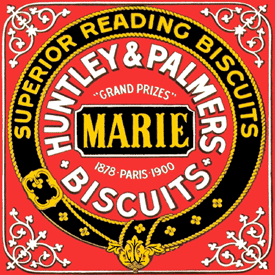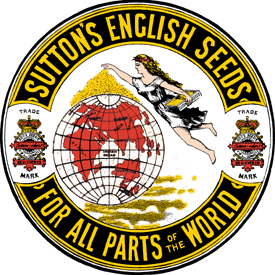 |
 |
||||||
|
|
Reading's Three Bs For four centuries, from about 1250 to 1650, the making of cloth was the chief industry in Reading. But the cloth trade was ruined by the Civil War of the 17th century and, though much sail-cloth was made in Reading between 1700 and 1800, yet the old industry never recovered. After 1800, hardly a trace of it remained. For some time, the only product for which Reading was especially noted was Cocks' Reading Sauce, first made before 1800. In later times, Reading was noted for its iron works and, by the end of the 19th century, for its printing works. But the three products for which Reading is now known throughout the world are its famous Three Bs: biscuits, bulbs and beer. The Biscuit Factory, which was once so vast in size, grew from small beginnings. In 1822, Thomas Huntley started a small bakery shop in London Street. It was in 1841 that George Palmer came to Reading and joined his cousin in the business. For some years, all the biscuits they sold were made by hand. In 1846, wheat became much cheaper, owing to the removal of duties on corn. Cheap corn and the invention of clever machinery by George Palmer made it possible to produce biscuits in large quantities and at a low price and a factory was opened on the King’s Road. Yet many years passed before the business of the firm grew to anything like its later size. Perseverance and skilful management, and constant attention to the quality of the biscuits, steadily brought their reward. In 1851, the firm employed 200 people. In 1862, it employed 400. By 1867, the number had risen to 996. Ten years later, it had multiplied threefold and, by 1914, the total was more than 6,000. Thomas Huntley died in 1857, but George Palmer had already been joined by his brothers, Samuel and William Isaac, and the progress of the business never paused. Almost everyone who lives in Reading has heard of the gigantic work once carried on at the Biscuit Factory. The factory buildings and the railways which brought the enormous supplies of butter, milk, eggs, flour, cocoanuts and other materials covered twenty-four acres of ground. Reading biscuits were sent in vast quantities to every part of the World, even finding their way to remote districts of Asia, Africa and America as early as the late 19th century. The growth of the Biscuit Factory, and the industries connected with it, such as the manufacture of tins undertaken by Huntley. Boorne & Stevens, has been the chief reason for the astonishing increase in the population of Reading since the coming of the railway in 1840. In 1970, Huntley & Palmer’s merged with the other major English biscuit makers, Peek Frean and Jacobs, to form Associated Biscuits and production in Reading ceased six years later. The bulb, or more properly seed, business was taken up by the family of Sutton early in the 19th century. At that time, it was very difficult for farmers and gardeners to get seeds of good quality, which could be trusted to grow into healthy plants of the right sort. Many persons who professed to sell pure seeds knew nothing about their quality or what they would produce, and they often mixed seeds that were good with seeds that were worthless. Martin Hope Sutton (1815-1901), when still a lad, took a great interest in all that had to do with plants and grasses and seeds. In the days before railways, he made long journeys on foot in order to see the best managed gardens. It was he who planted the first bed of tulips ever seen in Reading. In 1837, at the age of twenty-two, he began business as a seed-merchant. His father, John Sutton, joined him, and thus the firm was first known as John Sutton & Son. The new business prospered under the skilful management of Martin Hope Sutton and his brother Alfred, who joined him in 1843. When, in 1847, famine raged in Ireland because of the failure of the potato crop, the Suttons were able to advise the Government what measures to adopt. With their aid, great quantities of the seeds of turnip, beet, cabbage and other quickly growing vegetables were sent over to Ireland. About the same date, the penny post was introduced and railways were being made in all directions. The Suttons were quick to see that, by undertaking to send out seeds for free by post and rail, they would attract customers, not only from Reading and the neighbourhood, but from all over the country. From this time, their business grew by leaps and bounds. Their illustrated catalogues of seeds, flowers and vegetables became known not only throughout Britain, but throughout the world. They spared no pains to sell only the best and purest seeds; and, by thousands of experiments, they found out the best ways of growing them and of securing new varieties of vegetables and flowers. Every farmer and gardener in Britain has gained by these labours. The stores, order rooms and offices of the firm eventually occupied nearly seven acres of ground. Within the buildings was a private post-office, through which as many as 15,000 letters and parcels were sent to customers in one day. Nothing but the most careful order and despatch system could enable the huge amount of daily business to be accomplished without confusion. Orders ranged from a hundred tons of potato tubers to a tiny packet, hardly bigger than a pin's head, of some rare seed worth ten times its weight in gold. More than 500 assistants were employed in dealing with the orders which poured in by post, telegraph and telephone. On the east side of Reading, along the Great Western Railway, the firm possessed large grounds and glass houses for testing seeds by actual growth and for making other experiments. These experiments were conducted with great care and, day by day, the progress of the seedlings was recorded. Sadly, in 1976, the company moved to Torquay in Devon, and then to nearby Paignton in 1998. However, this Reading firm is still thriving despite no longer being in the town. Reading has been noted for its ales since at least 1627. This was an extension of the malting trade which was considerable in the town, due its easy access to the rich barley growing area of the Thames Valley Basin. However, most of the malt was sent to the London breweries until the development and expansion of a number of Reading businesses in the 18th century: the Mill Lane Brewery, the Castle Street Brewery and, most of all, the Seven Bridges Brewery owned and run by the Simonds family. The young entrepreneur, William Blackall Simonds, founded the Simonds Brewery in Broad Street in 1785 and quickly moving to Bridge Street four years later. He invested greatly in modern technology and his son, Blackall, was ready to exploit the change in the restrictive licensing laws in 1830. The firm supplied the Army in Aldershot and in India, and RMC in Sandhurst, and opened operations in Malta, Gibraltar and throughout North Africa. They became a limited company as H & G Simonds Ltd in 1885. In the 20th century, they bought up breweries and public houses across Southern England and, by 1938, were producing just over one percent of all beer brewed in the country. Unfortunately, ten years after merged with Courage & Barclay in 1960, the Simonds name was dropped. However, production continued, as Courage, in Bridge Street and then Worton Grange until 2010. Martin Hope Sutton, Thomas Huntley, George Palmer, and William Blackall Simonds are noted in the annals of Reading, not only as men of wonderful business energy, but as liberal benefactors. They believed it to be their duty to help those who were less fortunate than themselves; and with this aim they not only bestowed great gifts, but they gave also their time and energy. For their benevolence and public spirit, of which so many proofs exist in Reading today, the founders of the great firms connected with biscuits, bulbs & beer will always be held in honour. Occasionally Reading's Three Bs are extended to Six Bs: Biscuits, Bulbs, Beer, Bricks, Bacon & Bikes; or even to Nine Bs, with the addition of Boxes, Books & Brown Sauce. These new Bs refer to S & E Collier's Brickworks of Coley & Tilehurst, Messrs. M Venner & Sons' Bacon Curers & Sausage Manufacturers of Southampton Street and John Warrick & Co Cycles of St. Mary's Butts & Caversham Road; Huntley, Boorne & Stevens of London/Crown/Southampton Street, the Berkshire Printing Co of King's Road & Oxford Road and Charles Cocks' Reading Sauce of Duke Street & King's Road. Partly edited from W.M. Childs' "The Story of the Town of Reading" (1905)
|
||||||
| © Nash Ford Publishing 2017. All Rights Reserved. | |||||||








